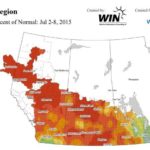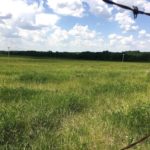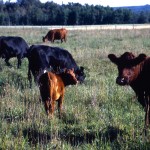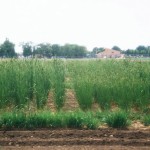CNS Canada — Sporadic rains and prolonged periods of dryness are taking their toll on forage crops in Alberta and parts of Saskatchewan. According to Terry Kowalchuk, a forage crop specialist with Saskatchewan Agriculture in Regina, the eastern half of the province is managing, but the situation is worse in the province’s west. The western […] Read more

Parched Prairie forages hang in under stress

Guenther: Manage risks around weather-stressed pastures, forages
Mother Nature has dealt a weak hand to many northwestern Saskatchewan livestock producers this year as frost, a cool spring and dry weather have hit pastures and hay stands. But there are still a few strategies for producers to make the best — and avoid the worst — of what the weather has left them. […] Read more

Sask. extends greenfeed seeding deadline
Livestock producers in parched areas of Saskatchewan now have until mid-month to seed insured acres to cereal greenfeed. The federal and provincial governments on Thursday announced an extension of Saskatchewan Crop Insurance Corp.’s deadline for seeding greenfeed to July 15, from June 30. Producers signed up for crop insurance will now be able to seed […] Read more

Learn how to benefit from sainfoin
A new sainfoin variety called AC Mountainview will allow producers to add alfalfa to their pastures without fear of bloat
Reading Time: 2 minutes A new variety of sainfoin is the focus of an upcoming training session in Lethbridge on July 21 and 22. “AC Mountainview has the ability to regrow more quickly than older varieties,” said Grant Lastiwka, a provincial forage and livestock business specialist. “Having a non-bloating, early growth and good regrowth legume is certainly something that […] Read more

U.S. corn, DDGS imports likely as drought tightens feed supply
CNS Canada –– Livestock producers in Western Canada will likely have to import feed grains such as corn and dried distillers grains with solubles (DDGS) this year, as drought is seen trimming domestic barley and other feed production. “We’ve seen droughts before, and when it’s happened, usually what has to happen is we import other […] Read more

Dry spring puts Sask. grass, hay in short supply
A dry, cool spring has checked pasture growth in Saskatchewan and a hay shortage is looming. The province’s latest crop report notes topsoil moisture in hay fields and pasture is rated 42 per cent short and 24 per cent very short. Crop district 7A, in west-central Saskatchewan, has the dubious distinction of being the driest […] Read more

Pasturing cattle on insured hayfields
Reading Time: < 1 minute This spring has experienced low precipitation rates and windy conditions in many parts of the province that may be contributing to poor forage growth. Some Agriculture Financial Services Corporation clients may wish to pasture insured hayfields prior to haying being general in the area. Clients wishing to pasture their insured hay acres prior to haying being […] Read more

The five keys to assessing rangeland health
The old adage about not being able to manage what you can’t measure applies to rangelands
Reading Time: 3 minutes Native rangelands are key assets to livestock producers — and rangeland health assessments allow them to adjust grazing practices to achieve productive, sustainable grazings. A rangeland assessment system looks at the five key functions of rangelands: integrity and ecological status; community structure; hydrologic function and nutrient cycling; site stability, and noxious weeds. And in all […] Read more

Guenther: Rain drops in on NW Sask.
Farmers and ranchers in northwestern Saskatchewan received much-needed rain late last week and over the weekend. Tom Brown raises cattle and is a crop reporter for Saskatchewan Agriculture and the reeve for the Rural Municipality of Mervin. His farm at Turtleford, about 80 km east of Lloydminster, received 11 mm of rain on Thursday night, […] Read more

New developments in forage-breeding research
One of the more recent offerings is hybrid bromegrass, which offers high first-cut yields and fairly rapid regrowth for grazing
Reading Time: 3 minutes Cattle producers across Western Canada rely on perennial forage grass species to provide their livestock with ample nutrition during the grazing period and for hay. Mother Nature provided these grasses with winter hardiness and reasonable drought tolerance needed to prosper in the Prairie climate — but University of Saskatchewan researchers have done their part, too. […] Read more

